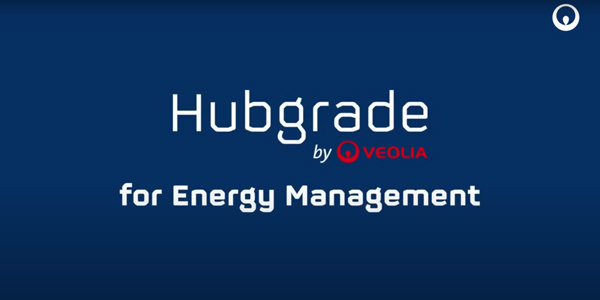Energy Markets Update
Weekly natural gas inventories
The U.S. Energy Information Administration reported last week that natural gas in storage increased by 63 Bcf. There was an injection for the same week last year of 27 Bcf while the five-year average injection is 38 Bcf. Total U.S. natural gas in storage stood at 3,644 Bcf last week, 7.8% less than last year and 2.2% lower than the five-year average for this time of year.
Gas markets soften
Natural gas prices are finally showing some signs of weakness with NYMEX winter contracts declining over $1 per MMBTU over the past few weeks. They were down another 5-7% yesterday and are currently trading 3% higher...in other words, volatilitile. This could present a buying opportunity to customers looking to add to their fixed gas positions. Despite some of the alarmist rhetoric about gas scarcity in the U.S., national stockpiles are only 2% lower than the 5-year average. There is enough gas, at least in the U.S. and for this upcoming winter (see more about European woes below)

Nonetheless, prices have almost doubled since early this year and U.S. domestic utilities are prepping for an ugly winter. Eversource Energy, which serves 3.6 million electric and natural-gas customers in Connecticut, Massachusetts and New Hampshire, warned that natural-gas customers in Connecticut can on average expect to see their bills increase by about 14% this month. In Massachusetts, customers may see bills increase by as much as 21%. James Daly, Eversource’s vice president of energy supply, said the company typically stores enough gas to meet about a third of its winter needs and relies on the market for the remainder. Winter standard offer power rates have been coming in at 50-80% higher YOY, depending on the rate class and utility.
The US EIA forecasts that on average, retail natural gas prices (commodity + delivery) in the United States are expected to rise from $10.17/MMBTU last winter to $12.93/MMBTU this winter, the highest price since the 2005–06 winter average. As a comparison, the European benchmark Dutch Title Transfer Facility day-ahead contract (commodity only) reached an all-time high of $39.51/MMBtu on Oct. 5, while the S&P Global Platts Japan Korea Marker spot Asian LNG price hit a record high of $56.33/MMBtu on Oct. 6. Prices have dropped since then, but they remain several times higher than prices in the U.S. and continue to encourage U.S. LNG exports.

Accordingly, pipelines to Mexico and Canada and tankers traveling to Europe and Asia have moved record amounts of U.S. gas out of the country this year as parts of the world fall short of supplies. LNG exports are of course constrained by physical limiations of the terminals, however a winter calamity here at home this could result in opposition to future LNG projects. American frackers, meanwhile, are holding the line on new drilling as investors pressure them to maintain capital discipline and return money to shareholders, which results in that natural-gas exports are pushing domestic prices higher.
Gas utilities expand renewable natural gas project investments in Q3
High-resolution satellites have detected substantial quantities of undeclared methane emissions leaking from gas pipelines, oil wells, fossil fuel processing plants and landfills all over the world. Using data collected from the Copernicus Sentinel-5P satellite combined with GHGSat’s high-resolution commercial imagery, scientists from the SRON Netherlands Institute for Space Research and GHGSat discovered the leaks, which in most cases would not be accounted for in mandatory greenhouse gas inventories.
A pair of landfills just outside Madrid, Spain were found to be emitting 8800 kg of methane per hour – enough to power 350,000 homes. The area shown in the map was originally identified based on methane hotspot mapping using Tropomi data from the Copernicus Sentinel-5P satellite by researchers at SRON.

Other notable culprits included a major gas pipeline in Kazakhstan and an oil & gas fields in Turkmenistan, however this is a global problem that is much larger than previously thought.
Methane is a greenhouse gas that is 80 times more potent than CO2 but is also a byproduct of the natural gas exploration, production, and transportation industry. Generally, economy-wide conversions from coal to gas are GHG emission neutral if methane leaks are approximately 8%. Most oil and gas producers say they have leakage rates of at 3-4% but this new data shows it could be 10-15%, according to Yasjka Meijer, the mission scientist of Europe's planned greenhouse gas monitoring mission CO2M.
The discovery presents both a problem and an opportunity. It indicates that we are pumping more GHG into the atmosphere than previously thought. However it is a solvable problem. Flaring methane is a standard low cost industry process that can be easily adopted and some of these sources can be captured and used for power generation. Furthermore, the new technology is a way of holding industry accountable.
Stephane Germain, CEO of GHGSat said, “With this information, operators and communities can build business cases for capturing landfill gas, providing new sources of revenue while mitigating their impact on climate. In addition, our data can help countries audit their climate impacts and more accurately monitor the progress of their Nationally Determined Contributions under the Paris Agreement.”
Natural Gas Storage Data

Market Data
Use the filters to sort by region
Market data disclaimer: Data provided in the "Market Data" section is for the newsletter recipient only, and should not be shared with outside parties.



